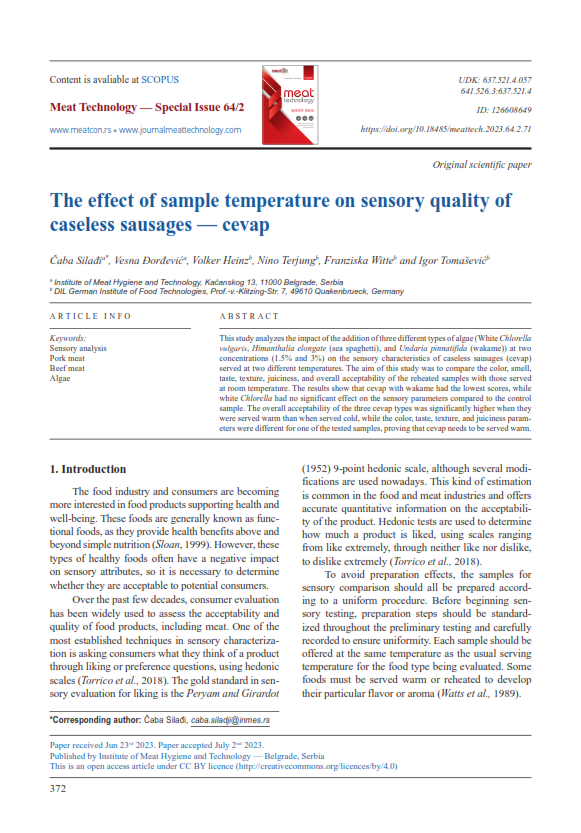The effect of sample temperature on sensory quality of caseless sausages - cevap
Abstract
This study analyzes the impact of the addition of three different types of algae (White Chlorella vulgaris, Himanthalia elongate (sea spaghetti), and Undaria pinnatifida (wakame)) at two concentrations (1.5% and 3%) on the sensory characteristics of caseless sausages (cevap) served at two different temperatures. The aim of this study was to compare the color, smell, taste, texture, juiciness, and overall acceptability of the reheated samples with those served at room temperature. The results show that cevap with wakame had the lowest scores, while white Chlorella had no significant effect on the sensory parameters compared to the control sample. The overall acceptability of the three cevap types was significantly higher when they were served warm than when served cold, while the color, taste, texture, and juiciness parameters were different for one of the tested samples, proving that cevap needs to be served warm.





